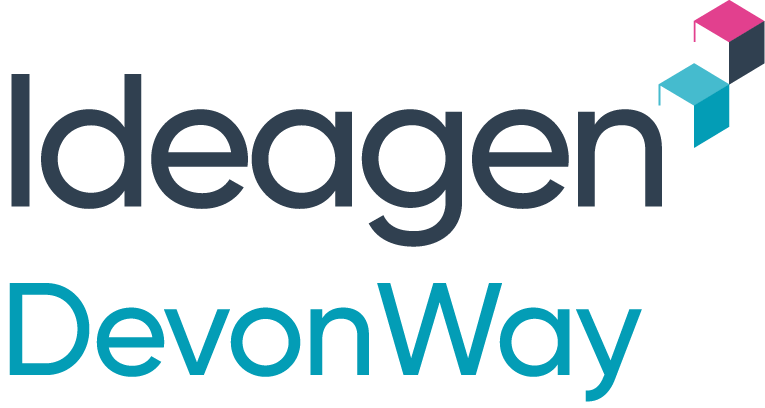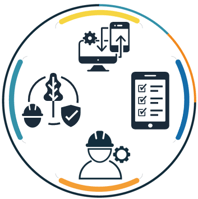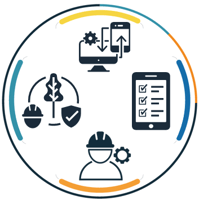Managing the environment, health, and safety concerns at an electric, gas, or oil utility company is complex. For example, a safety inspection may trigger a condition report, which could trigger a change in a controlled standard operating procedure, which could affect in-flight field work. These actions impact everyone from employees and management to government agencies, shareholders and ultimately the end-customer. With such complex processes involved, how do utility companies ensure success with their EHS software implementations?
1. Everybody Becomes an EHS Safety Engineer
The first step is to create a culture of safety, but this doesn’t happen easily. Management needs to create this culture by giving everyone access to the right information and tools. Employees need to have incident management software that everyone uses to report hazards, near misses, and unsafe behavior. The software needs to support a feature-rich incident management process and also be quick and easy for the occasional users to report on the less severe incidents which typically go undocumented.
2. EHS Software Solutions Must Integrate Across Functional Areas
Utilities manage chemical, mechanical, electrical and behavioral hazards within various processes, which are made more complex when considering the programs in place to reduce risk of an incident. These programs intersect with regular business processes like HR, training, finance, accounting, and supply chain management, requiring an integrated approach to keep everyone safe while improving EHS management. Having EHS solutions that plug and play with existing legacy systems is vital to achieving cross-functional success.
3. Successful EHS Software Requires a Systematic Approach
Because of the complexity of EHS software solutions, utility companies need to adopt a systematic approach to implementing new EHS solutions. First, plant managers and process owners need to examine their weakest area of EHS and conduct a problem analysis to determine what is wrong with the current EHS process. Second, they need to determine the overall process and flow design. Managers need to think of every aspect of the solution and research ways to improve the incident management process for safety and efficiency. Third, plant managers and process owners need to contact their internal IT department and outside vendors to determine whether the EHS software solution should be built in house or purchased. Fourth, they need to implement, test, and deploy the software solution. Finally, they must create opportunities for adoption of the new EHS solution for employees, managers, and stakeholders.
EHS software implementation can be an extraordinarily complex process that involves a high level of collaboration to ensure success. For this reason, most utility companies work on one piece of the EHS software implementation puzzle at a time. It is important for companies to have trusted partners who can have success working on small pilot projects, and who are also experienced enough to work on entire front-to-back end solutions.
DevonWay is a trusted partner for companies in the energy space because we respect the complexity of EHS software management. Whether it’s your mobile inspections, pre-job briefs, accidents and injury reports, or industrial safety events, we work with you to implement a tailored solution that fits your needs.
What’s the most problematic EHS process for you? Leave a comment in our LinkedIn Community Group or contact us to speak with an experienced team member.







